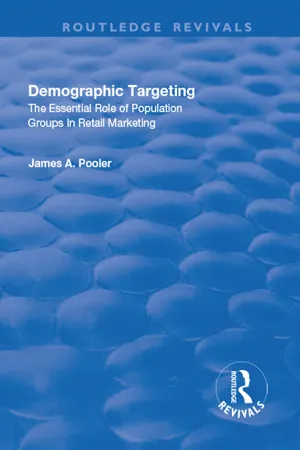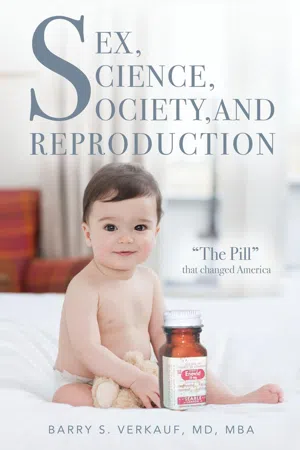Baby Boom
The Baby Boom refers to a significant increase in birth rates following World War II, particularly in Western countries. This demographic phenomenon occurred between 1946 and 1964, resulting in a substantial increase in the population. The Baby Boom had a profound impact on society, economics, and culture, shaping the post-war era and influencing various industries such as education, housing, and consumer goods.
6 Key excerpts on "Baby Boom"
- eBook - ePub
- Peter N. Stearns, Peter N. Stearns(Authors)
- 1993(Publication Date)
- Routledge(Publisher)
...B Baby Boom The Baby Boom, at its height in the 1950s, focuses a number of themes in recent social and demographic history, for western Europe and the United States. Quite generally, population experts in the second quarter of the 20th century, in western Europe no less than in the English-speaking world, believed that population size in the economically advanced nations would shortly cease to grow, eventually shrinking unless increased immigration was permitted. There was solid reason to believe this: in some parts of the world (France and the United States are the clearest examples), the fertility rate had been declining for a century or more, and would shortly reach the level of population replacement, if these long-term trends simply continued. And in the rest of the economically advanced world, the same trend had been in operation, if for somewhat shorter periods. The reasons for the fertility decline—urbanization, the hope of economic betterment of each child through extended education or other pre-employment preparation, the awakening of ambitions in women that were in compatible with frequent pregnancy, and the spirit of individualism—were clear enough and were quite general. When, at the conclusion of World War II, fertility rates increased sharply in most of these same nations, experts were not very surprised: just such an increase had been experienced quite generally after World War I, a natural response to the release of tensions and to the postponement for the duration of the conflict of many aspects of normal life, including marital sexuality and family life...
- eBook - ePub
The Pinch
How the Baby Boomers Took Their Children's Future - And Why They Should Give It Back
- David Willetts(Author)
- 2010(Publication Date)
- Atlantic Books(Publisher)
...For many of the people enjoying it, it was brought to an abrupt end with marriage and children, as we saw. But we are not just trying to pin down these narrow and intense cultural moments; we are trying to identify bigger economic and demographic changes. That means focusing on the birth surge which carried on from the 1940s to a second peak in the early 1960s. Looked at as a demographic and economic phenomenon the Baby Boom covers the twenty years from 1945 to 1965. The upswing of a boom feels very different from the downswing. The cutting edge feels very different from trailing edge. These far less optimistic late boomers had punk and the Poll Tax riots. Their emblems were not flower power and psychedelic colours but nose studs and Mohicans – their icon was not Tariq Ali but Johnny Rotten. Indeed many of the big social changes of the permissive era from divorce and lone parenthood to real violent radicalism, which we attribute to the 1960s, actually happened in the seventies – the 1970s were a product of the Baby Boom too. 35 It may be that Britain’s Baby Boomers do not have as strong a collective identity as in America because we have two peaks linked by a more modest surge. This is a contrast to the single high plateau of the American Baby Boom in the period from 1957 to 1961. The post-boomers are the product of the low birth rates and the tough times of the 1970s. This is a shorter generation, centring on the historic low in the birth rate in 1976. They are sometimes called the lost generation. Douglas Coupland popularized a better name in his novel Generation X. 36 It is a small cohort covering a demographic trough from the mid-sixties to a low point in 1976, through to the arrival of Margaret Thatcher as Prime Minister in 1979, after which we enter a modest demographic recovery...
- eBook - ePub
The New Wellness Revolution
How to Make a Fortune in the Next Trillion Dollar Industry
- Paul Zane Pilzer(Author)
- 2012(Publication Date)
- Wiley(Publisher)
...With a normally expanding population, these topics are typically dominated by the concerns and tastes of the younger members of the society, since there are simply more (and more) of them. However, the bulge in the U.S. population of those born between 1946 and 1964 has caused our topics of concern to be dominated by this group rather than by the concerns of the next generation. b This phenomenon initially manifested itself in the late 1960s and early 1970s when certain oldies radio stations became more popular than contemporary ones—as the first Baby Boomers entering adulthood continued to listen to the music of their youth. Beginning in the 1970s we saw boomers increasingly returning to the fashions of their youth in clothing, automobiles, housing, furniture, industrial design, and commercial architecture. A new word was coined to define this phenomenon, retro, which entered our vernacular (and our dictionary) in 1974. 1 Now, as the Baby Boom generation (currently ages 43 to 61) is in its most economically productive years, this phenomenon of catering to their concerns will accelerate even more. Their economic dominance will continue until sometime after 2010, when the first boomers turn 65 and their economic power and social influence begin to wane. The economic impact of the Baby Boomers on wellness is even stronger than their numbers suggest—because this group is behaving differently than any prior generation. Boomers are refusing to passively accept the aging process. A recent book by Cheryl Russell explains it best from a marketing perspective: One of the most important truths about boomers is that they are still the youth market. In their teens and twenties. . . boomers created the youth market. As they enter their forties and fifties. . . boomers are proving the youth market to be a state of mind rather than a stage of life. Most boomers still live in that state, refusing to adopt the attitudes and lifestyles of their parents. . . ...
- eBook - ePub
Generations
The Time Machine in Theory and Practice
- Judith Burnett(Author)
- 2016(Publication Date)
- Routledge(Publisher)
...Even before the Baby Boom swelled the teen-age population, postwar prosperity was keeping them in school longer, providing more leisure time and allowing more mobility – all, as some adults saw it, encouraging children in mindless pleasure-seeking and dangerous rowdiness. (Parales 1995:21) The recognition of the importance of youth in more ways than one to post war European and American society is a critical one: youth were no longer merely the harbingers of a zestful force for the future, but also a market in their own right. Indeed, much of the appeal of films such as Rebel Without a Cause is the insight into the habitus of youth which the miniature (and idealised) period piece affords. Youth cultures and a post-war Baby Boom were to produce a large generation with strong concepts of identity. The sociological explanations for this are many and varied, as are the ways in which the Boomers are constructed in the literature, as exclusively referring to the post-war peak in Europe and America, or referring to this alongside the second peak of the Boomers, the long wave throughout the Fifties and Sixties. The generations of the post war world took on a different modus operandi than those previously...
- eBook - ePub
Demographic Targeting
The Essential Role of Population Groups in Retail Marketing
- James A. Pooler(Author)
- 2018(Publication Date)
- Routledge(Publisher)
...Chapter 9 The Baby Boomers: Shopping for Emotional Reasons Just who are the Baby Boomers? They are the group of people that was bom in the years just after World War II. The war had ended, the economy was ready to boom, people’s fears about the future had been relieved and good times had arrived. As a consequence the population birth rate literally exploded in the years immediately after the war and a huge group of people was bom. This huge group is known as the Baby Boomers (bom in the economic ‘boom’ after the war) and they are notorious for their demographic influence. The boomers were bom in the years between 1946 and 1964 and they represent an unprecedented ‘bulge’ in the birth rate statistics for the century. Never before had such a large group of people been bom in such a short time span. The boomers are important. Because of the size of the group it has an impact on almost everything around it. The boomers are thought to influence the stock market, housing prices, health care and just about anything else that is inclined to change in response to sheer numbers of people. The boomers are now closing in on the range of forty and sixty years of age and they still have an effect on things around them. One place where the boomers have long driven the numbers is with respect to shopping. This huge group of people has had a decided effect on patterns of consumption over the last fifty years and they continue to do so today. Consider the impact that they have had on housing prices throughout their lifetimes. They started to enter the housing market in the 1960s and continued to do so in the 1970s. As a consequence housing prices were driven to price levels that had never before been witnessed. Boomers that bought a house in the 1960s were able to sell it twenty years later for tens of thousands of dollars more than they paid for it...
- eBook - ePub
Sex, Science, Society, and Reproduction
"The Pill" that changed America
- Barry Verkauf(Author)
- 2020(Publication Date)
- Palmetto Publishing Group(Publisher)
...They experienced a time of increasing affluence in America when industry blossomed after the second World War into the 1990s. “The Baby Boomers” were born from 1946 to 1964. They were societal products of the Cold War and Vietnam and many developed antiestablishment attitudes. However, they grew up in a time of increasing affluence, and many of them changed their earlier philosophy as they grew older and had experienced the responsibilities that adults have. “Generation X “was born between 1965 and 1980. They were called the “baby bust” because they were the first generation after “the Pill” and other effective contraceptives became widely available and births declined as a consequence of this and changing societal values. Now we are dealing with” Generation Y,” also called “The Millennials.” They were born between 1981 and 2001 and are now societies largest segment. They are tech savvy. They are ethnically tolerant. They are well schooled. They are well traveled. They seem to have greater cultural awareness than earlier generations. They are used to working in groups and have been taught to do so comfortably. They are said to be less inquisitive and have more value concerns. They are environmentally sensitive. They are little bit more risk averse and they tend to be optimistic and confident about their future. Some say they lack workplace etiquette; their dress code, however, is said to be getting better. They expect their work to be fun and meaningful. They are involved in community service and they think community service jobs are important. Their loyalty is principally self-loyalty, rather than to the organization for which they work which characterized the generations before them. They value time more than money and they believe in life/work balance. Some say they have been pampered by “helicopter parents.” They are comfortable with digital technology. We will have to wait to see about all the consequences of that....





